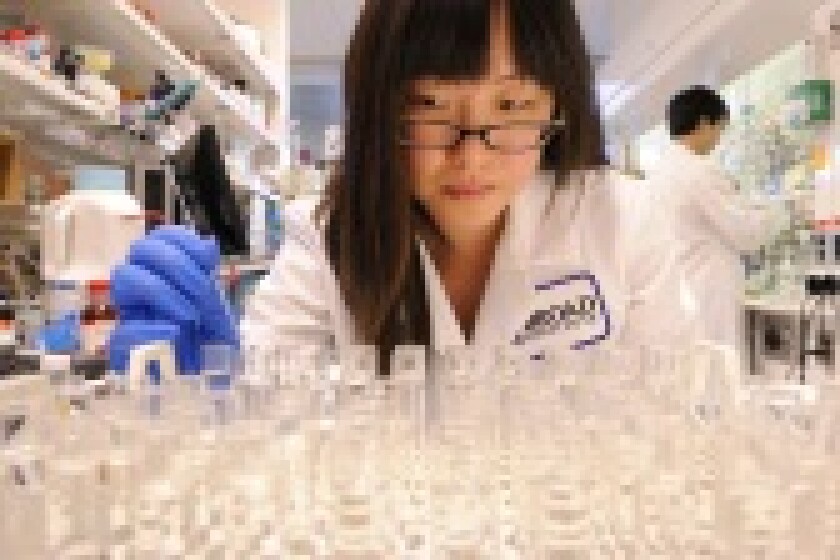Artificial intelligence (AI) and machine learning is allowing life sciences firms to better analyse data, produce information and more effectively contribute to drug discovery. But in-house counsel at these companies are increasingly aware of the implications that could have for their patent and licensing strategies.
Patenting laws and guidance have been developed for patenting AI and machine learning solutions themselves. The same cannot be said for AI-derived inventions. As life sciences companies increasingly evolve into biotech firms, many are beginning to consider how they might commercialise the new tools of their trade as well as the products they help make.
Under current laws, the question of inventorship and patentability is framed in terms of human creation – particularly in the US, which only recognises individuals as inventors and not companies or machines.
But as AI becomes more capable of creating its own pharmaceutical inventions, and drug companies increasingly want to use the technology for that purpose, that necessity is raising questions among in-house lawyers about who would be an AI-derived invention’s inventor for the purposes of a patent application.
The head of IP in oncology at a European pharmaceutical manufacturer tells Managing IP that innovator drug companies are already questioning whether an inventor must be a person, or if patent laws need to allow for a legal entity, such as a corporation, to be the inventor of an AI-derived invention.
“Presumably, the inventor will have to be more than the person who pushed the button to start the computer program,” he says.
A list of possible human inventors could include the AI software of hardware developers, the medical professionals who provided the input for AI’s development or those that reviewed the AI results and recognised that an invention had been made.
|
|
“A person who identifies a problem, but does not contribute to the solution, is not an inventor” |
|
|
That uncertainty is a problem because this aspect of the patent application could impact the quality of the patent and even become a focus point for invalidity proceedings in the future.
He adds that there have likely already been patent applications where this matter of ownership has come up, and a person has been named as the inventor for convenience to avoid a human-inventor issue at the patent office.
If the laws change, however, and AI becomes registrable as the inventor of a drug, the question of inventorship could become more complex.
“A person who identifies a problem, but does not contribute to the solution, is not an inventor,” says the IP head of oncology. “Just as if I were to ask a PhD student to solve a problem and she goes away and comes up with the solution, she would be the inventor and not me. So perhaps the intelligent computer that solves the problem – or at least the corporate entity that owns the computer – should be the inventor.”
The IP and legal counsel at a global pharmaceutical company adds that in sciences the person who posed the hypothesis is normally determined as the inventor and that will likely be the case in any law that is revised to incorporate the increased use of AI in drug discovery.
“If you ask the software if there is a link between high blood pressure and smelly feet, for example, and it goes through your databases and finds a correlation that leads to an invention, the real invention is posing the hypothesis and the data then bears on that hypothesis,” he adds.
Where’s the bar?
There are other barriers to patenting AI-derived inventions. The head of IP in oncology points out that as AI becomes more used by drug companies, patent offices may start to shift patentability criteria because “the person of ordinary skill in the art” might not actually be a person. Because criteria such as claim construction and obviousness are based on the notion of the skilled person, the bar for those tenets may end up being raised.
“If the computer is making it much easier to find new compounds, for example, does that raise the bar for obviousness?" the head of IP in oncology asks.
“It has happened before. Ten or 15 years ago you would be able to get quite a broad claim to antibodies in a patent. But technology has progressed and, in general, as soon as an antigen is known, the tools are there for anyone of moderate skill to manufacture antibodies.
“As such, the hurdle to show inventive step has gone up and I wonder if the use of AI becomes routine in drug discovery.”
|
|
“If we are the alleged infringer and are responsible for the actions of a computer, as we are for the maintenance of a waste system in our factories, if something goes wrong one would argue that we are liable” |
|
|
Given that most AIs have the technological capacity to infringe patent claims, some in-house counsel are also uncertain about who would be held responsible for actions taken by machine-learning software. Should it be the developer, for example, another person or the AI itself?
The automotive industry is undergoing a similar quandary with the idea of who would be responsible for a car crash when the vehicle is driven by a piece of software and not a human being.
The head of IP at a global pharmaceutical manufacturer says it is unlikely that medical companies will be able to dodge liability by pointing fingers at their AI.
“For argument’s sake if we are the alleged infringer and are responsible for the actions of a computer, as we are for the maintenance of a waste system in our factories, if something goes wrong one would argue that we are liable – whether because we’ve broken environmental law or infringed patent rights.”
But, he adds, there may be many in the profession who would argue otherwise.
New business models
While the right filing strategies for AI-derived inventions are an unknown it has become much easier to patent the software itself in recent years – and for life sciences firms that are making their own enhancements to machine-learning technologies as opposed to using an off-the-shelf system, that presents lucrative licensing and commercialisation opportunities.
Aaron Smethurst, director of IP policy at UCB, explains that his company has developed a system called Bonebot that provides vertebral fracture predictions based on CT scans, which could have been taken for other initial purposes. He says that the software helps the company to identify patients with potential future fractures which can help physicians begin treatment early and prevent serious injury.
The software helps the company to identify drug developments that will help treat the condition, but it also have obvious application for doctors looking to identify it early so they can treat it more effectively.
“The interesting question for a company like ours is how do we commercialise that invention? We have the knowledge around the program but how do we best deliver the value of this innovation to patients as a drug company.
“We’re not a software company and are not used to selling such tech to hospitals, so such technology will most require partnering and the IP strategy has to take that into consideration.”
These drug companies may also choose to monetise the data generated by these inventions as they become more sophisticated and more effective at processing information on patients and populations.
Ferenc Molnar, head of IP support at Roche Diabetes Care, tells Managing IP that pharmaceutical and medical device companies may begin to go down the route of companies such as Google or Facebook and sell the data they generate on patients to other firms that can use it to develop their own treatments.
He adds that in that scenario, however, companies would have to be careful not to violate data privacy laws such as the EU’s General Data Protection Regulation. They could do this by anonymising the information they sell.
AI advancements could one day make the medical advancement portrayed in sci-fi shows a reality. For that to happen, life sciences companies will first need to navigate the glaring gaps in patent law when it comes to patenting AI-derived inventions. But in the long run, these increasingly tech-focused businesses will benefit from new revenue streams that arise from these products and royalties from the machines that helped come up with them.










